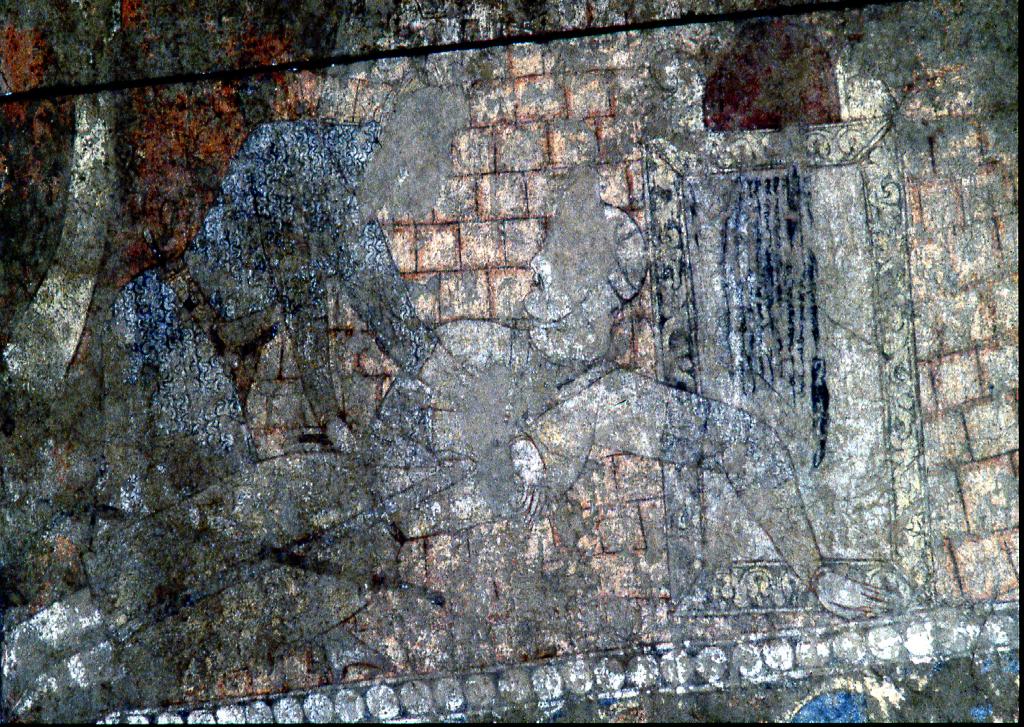Amazon Audible Gift Memberships

Amazon Audible Gift Memberships
Warrior in full mail armour assisting a prostrate man. Sogdian mural from Panjakent

A larger image of this Wall-painting: Warrior in full mail armour assisting a prostrate man. Piandjikent, early 8th century AD. State Hermitage Museum, St. Petersburg.
Photograph 57. Warrior in full mail armour assisting a prostrate man, detail of a wall painting from Penjikent, Sughdian, early 8th century (Hermitage Museum, St. Petersburg, Russia).
Source: p.256,
"The Iconography of a Military Elite: Military Figures on an Early Thirteenth-Century Candlestick (Part II)" by David Nicolle, in Mamlūk Studies Review Vol. 19, 2016

Fig. 51. Penjikent.
Sector XXII. Room 1, northwest corner. Drawing of the grapple fight.
In another case (room 1 of sector XXII) a warrior on horseback directs a spear into the chest of a foot warrior, who draws a sword from its scabbard.
The spearman holds the spear from below with his left and right arms bent at the elbow and extended forward and behind his back (Fig. 51).
The main purpose of the spear in battle among the Sogdians is a ramming blow with the entire mass of a heavily armed rider.
...
On the Panjikent wall paintings, characters dressed in chain mail are depicted repeatedly:
in room 1 of sector VI - the figure of a standard bearer on the southern wall;
on the northern wall is a kneeling figure; three figures near the chariot in the northeastern corner;
in the "blue hall" (room 41 of sector VI) - the riders of the third tier of the western wall;
warriors of the second tier;
on the western and northern walls of room 1 of sector XXII (Fig. 51).
The chainmail shirt of the Penjikent riders is always below the knee, with slits in the front and back,
thanks to which the chainmail did not interfere with sitting in the saddle. The cuts were full of odor, so the dismounted warrior was reliably protected from impact.
The upper part of the chainmail was tight to the body. The chainmail reached the throat, and the neck was protected by a chainmail aventail extending from the helmet.
Chainmail sleeves usually covered three-quarters of the arms, followed by plate bracers (Figs. 51 and 57).
Source: V. I. Raspopova, Metal products of early medieval Sogd, 1980.
Referenced as figure 430 in The military technology of classical Islam by D Nicolle
430. Fresco from Piandjikent Reception Hall XII/1, 7th-8th centuries AD, Transoxanian, Hermitage, Leningrad (Aka S, Yaku)
Also interpreted as Wall-painting: Duel Outside a Castle. Piandjikent, early 8th century AD. State Hermitage Museum, St. Petersburg.
Back to Sogdian murals from Panjakent, 6th-8th Centuries


